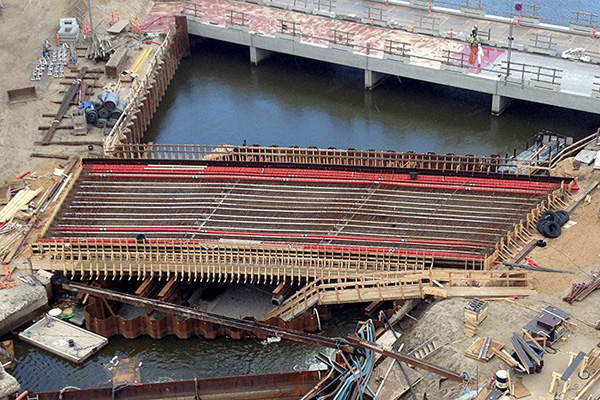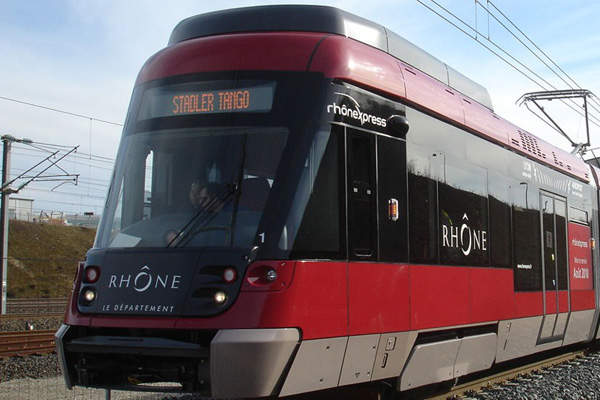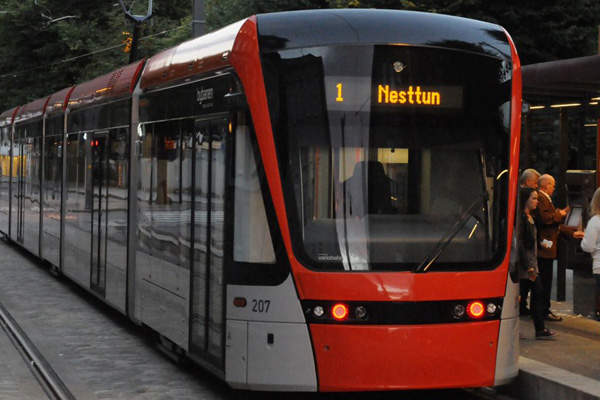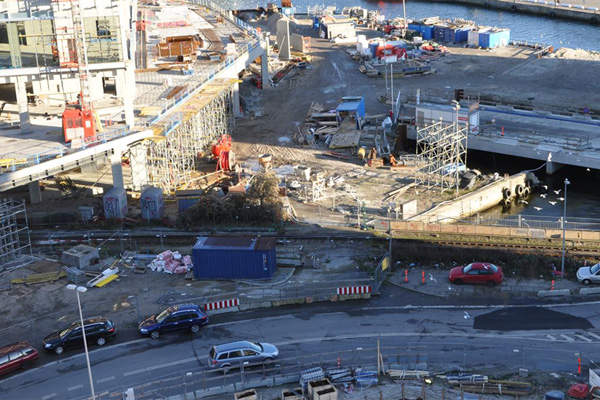Aarhus Light Rail Project or Aarhus Letbane is the first light rail project in Denmark. Construction on the project was started in June 2013 and completed in December 2017. The first phase of the light rail project involves 110km of light rail line serving 51 stops in the Aarhus area.
The first stage of the light rail transit (LRT) project uses two existing single-track heavy rail lines running into the city’s main rail station Aarhus Hovedbanegård (Aarhus H), and 12km of newly constructed double-track light rail line passing through the most densely populated part of Aarhus.
The two existing local lines being converted for LRT operation without changing their alignment include the 70km line stretching north of the city to Grenaa and the 30.5km line running south of the city to Odder. Both the lines will be upgraded and electrified as part of the project. The service extension to Odder was inaugurated in August 2018.
Aarhus Light Rail Project development
The Aarhus light rail project was mooted in 2006 and in January 2009, the Danish Parliament granted an allocation of kr500m ($85m) to the rail project, as part of the green transport package.
Major studies were undertaken for the project starting from October 2010 and the parliament approved the construction of the project in May 2012.
A special purpose company called Aarhus Light Rail I/S (Aarhus Letbane I/S) was founded in August 2012 to implement the project. It is owned by the City of Aarhus (47.2%), Danish State (47%) and Central Denmark Region (5.8%).
Aarhus Light Rail stage one route and station details
The 12km double-track line starting from Nørreport, north of Aarhus H, passes through key locations in the Aarhus city such as Aarhus University Hospital, Aarhus University, Skejby and Lisbjerg, before connecting the existing Grenaa line at Lystrup.
The new line forms a loop in Aarhus city centre while connecting to existing local rail lines at its both ends.
Stage one uses 32 existing stops and features 19 new stops along the route. The Aarhus station and park and ride facilities near major stops along the route were refurbished. Length of the new light rail platforms is approximately 140m.
Aarhus LRT stage one construction
Construction on two new tunnels between Aarhus University and Aarhus University Hospital in Nørrebrogade started in October 2014. The Randers Way and Nørrebro Street were reduced in size to create space in-between for the new double-track LRT line.
The project also involved construction of eight bridges on the new line and the bridge over Egaa valley Egådalen. At 347m in length and 17m in width, it is the largest bridge built as part of the project.
Construction of a new 30m-long and 11m-wide bridge over Aarhus River was completed in October 2014.
Rolling stock
The first stage of the LRT network is operated using Tango and VarioBahn tram trains supplied by Stadler. The 39.2m-long Tango tram trains have a 266 passenger capacity, are capable of running at a speed up to 100km/h. They will be operated on the northern route of the LRT line from Grenaa to Aarhus H.
The 32.4m-long and 224 passenger capacity VarioBahn trams with 80km/h of maximum speed run on the southern route of the line from Odder to Aarhus H, and from Aarhus H to Lystrup via Lisbjerg.
Financing
The first stage of the Aarhus Light Rail Project was carried out at a cost kr2.4bn ($408m), which is being funded 47.2% by the City of Aarhus, 47% by the Danish State and 5.8% by the Central Denmark Region.
The Flexity family of light rail vehicles (LRVs) is manufactured by Bombardier Transportation.
European Investment Bank provides DKK14.2m of funding to the LRT project as part of the European Commission’s European Local Energy Assistance programme (ELENA) to support construction and transportation projects that contribute to energy savings.
The Aarhus Light Rail Project is estimated to contribute 47GW of annual energy savings and reduce 7,300t of CO2 emissions each year.
Contractors involved with the Danish light rail project
In 2010, COWI and Systra were awarded the contract to provide technical support for the light rail project from initial feasibility study through to issue of tender documentation.
A German-Italian consortium comprised of Stadler Pankow and Ansaldo STS was awarded a turnkey contract in July 2014 to build and equip the first stage of Aarhus light rail project.
Stadler Pankow supplied the rolling stock, while Ansaldo STS provided infrastructure, including rails, overhead signalling, and control and maintenance centre.
C F Moller was hired to prepare the Environmental Impact Assessment report for the project.





